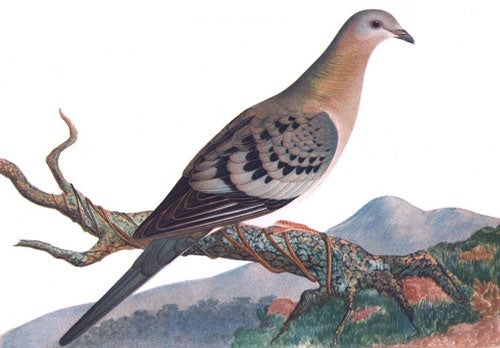OUTSIDE: Remorse for a Pigeon
Published 2:27 pm Thursday, September 17, 2020
|
Getting your Trinity Audio player ready...
|
By Steve Roark
Tri-State Outside
There are times I feel sad that I did not get to see things that are long gone.
The American chestnut tree was once the dominant tree in our forest but is now reduced to scattered surviving stump sprouts.
The passenger pigeon (Ectopistes migratorius) was once considered the most abundant bird on the planet, with flocks that could darken the sky for days as they migrated. This bird is now only a stuffed animal in the Smithsonian museum.
The passenger pigeon looked much like the mourning dove but was bigger with a longer tail. They had slate gray bodies with a pinkish breast and red eyes.
The name passenger probably came from their migratory flights from Canada and the Great Lakes to the southeastern U.S.
Here is a description of one flock by the famous Naturalist John James Audubon: “The air was literally filled with pigeons; the light of noonday was obscured as by an eclipse; the dung fell in spots not unlike melting flakes of snow. The atmosphere, during this time, was strongly impregnated with the peculiar odor which emanates from the species.”
Audubon calculated that one flock he observed covered 180 square miles of sky and took three hours to fly past him.
The 19th century population of the bird was estimated at 4 billion.
The pigeons fed almost exclusively on mast (nuts and acorns) found in eastern forests, especially chestnuts.
They nested in those same forests, with a single large tree containing more than 100 nests made of loose sticks. Roosting also took place in the forest, where noise from the huge flocks could be heard for miles.
Large populations protected the birds from predators until European settlement in North America.
The huge bird colonies drew professional shooters anxious to supply urban markets with meat, and they were easy to kill while roosting. They could be shot, netted and clubbed in large numbers.
By the early 1800s, the size of the flocks began to thin noticeably. By the late 1800s, the Great Lakes states became the last stronghold of the bird.
But the invention of the telegraph quickly notified hunters of the exact location of the roosts, and newly expanded railroads carried them to the birds and effectively shipped back barrels of iced pigeons to waiting city markets, where they were sold for 50 cents a dozen.
By 1878, the population was down to 50 million, and by 1888, to a single large roost in Wisconsin.
Eventually, it came down to one captive bird at the Cincinnati Zoo, which died on Sept. 1, 1914.
The only positive to this story is that their extinction did give rise to a conservation movement that led to better wildlife and natural resource management.
Remember y’all, greed is bad.
Steve Roark is a volunteer interpreter at Cumberland Gap National Historical Park.





